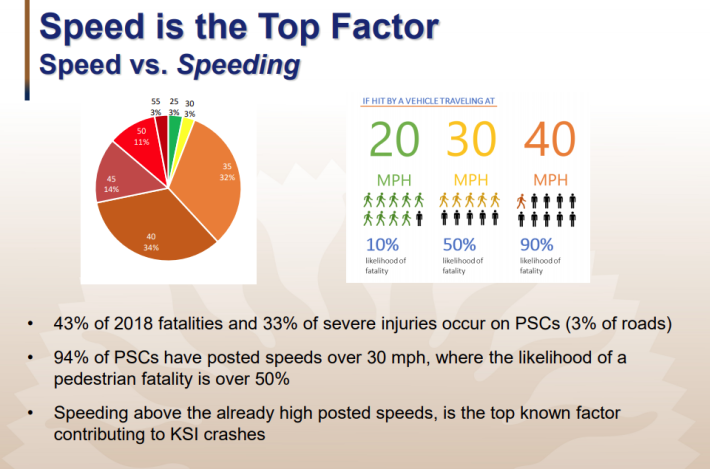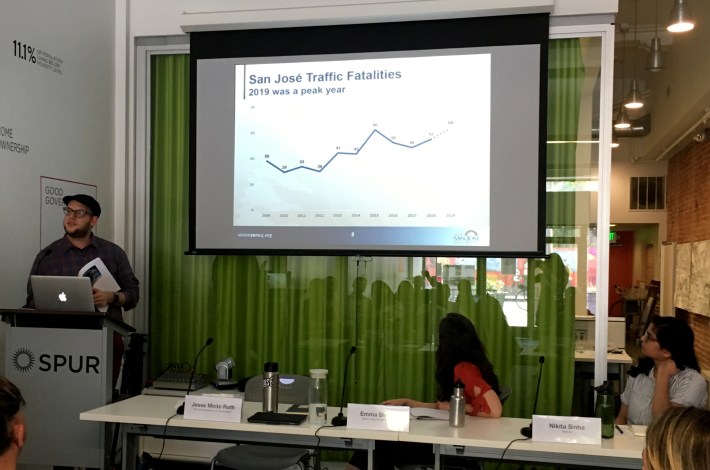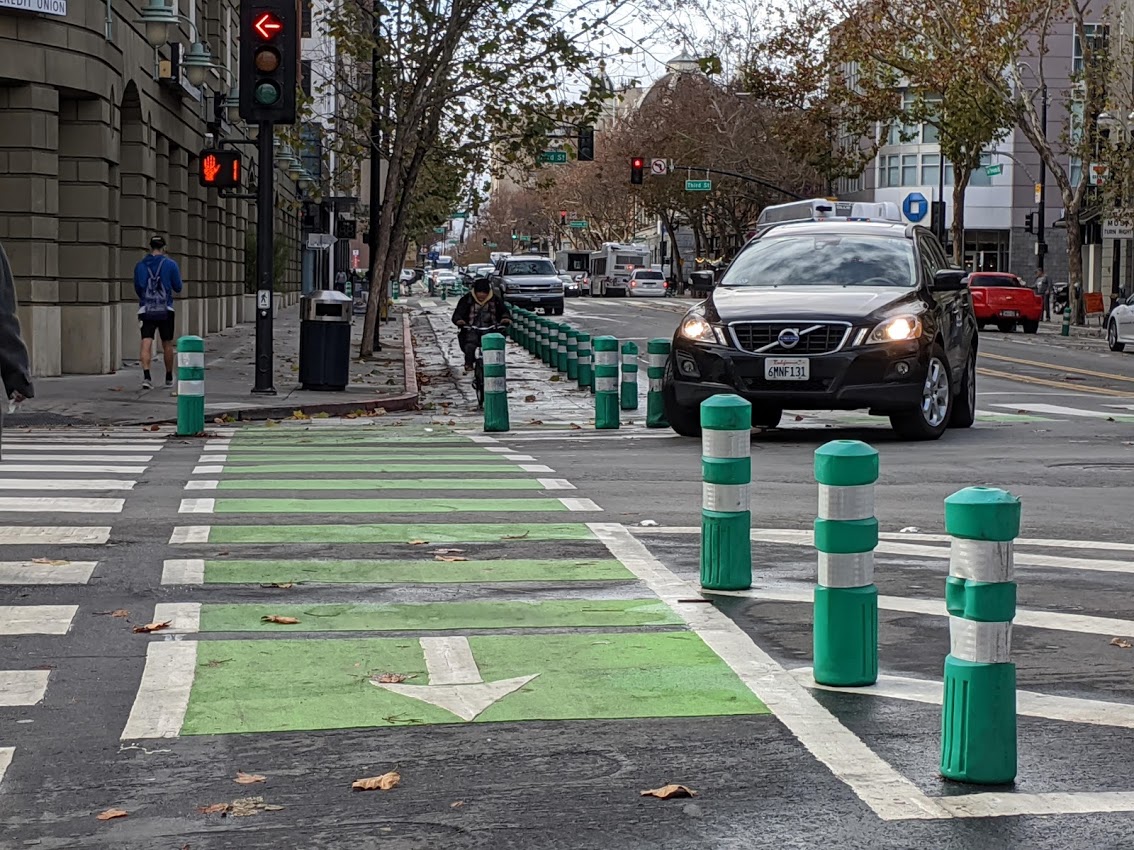The city of San Jose officially adopted a Vision Zero policy in 2015. Based on policies developed in Sweden, the aim of Vision Zero is to achieve zero traffic fatalities through a combination of policies and street design changes. The idea is that municipalities can reduce risk enough that when crashes do happen, their consequences are less severe to everyone involved.
Americans tend to be skeptical of the notion, but Helsinki, Finland and Oslo, Norway both achieved the monumental goal last year: neither city recorded any pedestrian or bicyclist fatalities during 2019. Meanwhile, cities throughout California and the U.S. are adopting Vision Zero policies and goals and investing money to achieve them.
Five years after adopting its policy, San Jose has not reduced traffic fatalities. Jesse Mintz-Roth, Vision Zero manager for the city, showed a graph to a lunchtime audience at SPUR San Jose that revealed that the opposite has been happening: traffic fatalities in the city have been rising for the last five years. Pedestrians are the most at risk of being injured or killed in a crash, followed by bicyclists, and the median age of both groups is rising.

San Jose's Vision Zero efforts are just beginning to ramp up. The city council recently approved almost $7 million in funding for a range of programs aimed at reducing serious crashes. Most of that money will go towards the city's plan to quickly and inexpensively build safety projects in its Better Bikeways plan. "These kinds of quick-build projects cost only about 3.5 percent of the cost of comparable capital projects," said Mintz-Roth. They are still expensive, but green paint and plastic posts can change the streetscape in ways that reduce crossing distances for pedestrians, create clearly delineated space for bicycles and buses, and slow cars to safer speeds.
The city plans to build about eleven miles of quick-build projects, for about $4 million per year, on the corridors the city has identified as high injury areas.
The quick-build projects are one aspect of San Jose's Vision Zero plan. Another is the creation of a task force to encourage collaboration and communication across city departments and government agencies, including parks, transit, city planning, and advocacy groups among them. The task force will hold its first meeting in a few weeks.
The city is also working on creating analytical tools and making the information they gather available to the public. That means collecting data from a variety of sources that don't automatically report or share information they may have, including police reports, trauma centers, the fire department, and the Valley Transit Authority. Each of these agencies may collect data on injuries that happen under their jurisdiction, but right now that information is not collated to help the city understand where crashes are happening and why.
Existing data does point toward some trends, however. For example, most of the high-injury corridors are in "Communities of Concern," which is the regional designation for disadvantaged communities: in other words, low-income areas, usually communities of color, that have been neglected in past infrastructure funding patterns.

Another key point Mintz-Roth pointed out is the way speed plays a role in serious injuries and death. Of the five top factors in crashes, speed is far and away at the very top of that list. "Legal speeds are a problem," said Mintz-Roth, referring to unnecessarily high speed limits on city streets that have been set based on current drivers rather than safety outcomes. But speeding above those limits is also a key reason for fatalities and serious injuries in the city.
San Jose and San Francisco have been lobbying the state to be allowed to deploy automated speed enforcement cameras, but so far without any luck. They also participated in the Zero Fatalities Task Force that recently released recommendations to change the way speed limits are set in the state.
Emma Shlaes, Deputy Director of the Silicon Valley Bike Coalition, told the audience that SVBC's goal is to shift both the perception and the reality of safety in the city, so that not only is it safer and more comfortable for people to walk and ride, but people feel safer doing so.
She pointed out that adopting a policy, as San Jose did in 2015, is the first step in achieving zero fatalities--or even a reduction in fatalities, which she said the city of Fremont has achieved since it adopted its Vision Zero policy in 2013. The second step is to develop an implementation plan.
City leaders "need to publicly endorse and support policies," she said, and they need to commit resources towards high-injury areas. "You need political will and public support to withstand the backlash that happens when changes are made to the streets," she added.
Nikita Sinha of California Walks applauded the city's commitment to funding and quickly building safer infrastructure. As advocates, they work to ensure that people who are most affected by traffic violence have their concerns considered and acted on. For example, families may need resources while they are in the midst of dealing with a loved one's injury or death. Compassion, she said, is especially needed.
She spoke of the annual World Day of Remembrance, which is both a memorial and a call to action. She said it was both moving and significant when the city council read out the names of the sixty people who died in car crashes in San Jose last year.
The panel addressed the obstacles that face cities in the U.S. when trying to adopt and act on Vision Zero goals. There are definitely cultural hurdles, exemplified in the use of the word "accident," which tends to absolve drivers, when describing a collision.
Shlaes suggested that one of the best ways to convince people of the value of the changes Vision Zero could bring is to have them experience it. Open streets events and Bike to Work Day, for example, get people to try walking or biking in a safe and supported way. "Once they experience the joy of biking," she said, "they are more likely to want to keep doing it.

For more events like these, visit SPUR’s events page.





